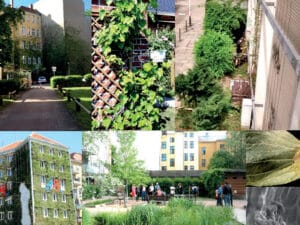Join JPI UE
Faq
FAQ
Please click here for the frequently asked questions we collected.
If you have an additional questions you are welcome to mail us at info@jpi-urbaneurope.eu
The Vertical Green 2.0 project has developed tools to predict the cooling potentials of vertical greenings and their water demands to better understand and manage vertical greening as a viable source of food and energy. “What makes vertical greening so interesting is that it can contribute to numerous urban transitions”, says one of the project coordinators Karin Hoffmann. The project results help answer one of the big questions on this topic, namely why vertical greening has not been applied on a large scale before despite its promising nature.
“This enables cities to transition towards more circular systems since surface runoff water and grey water are upcycled for plant growth and cooling”
“In Tokyo, we have made the commitment to be a zero-emission city by 2050. This tool helps us measure how we are going to do that.”
